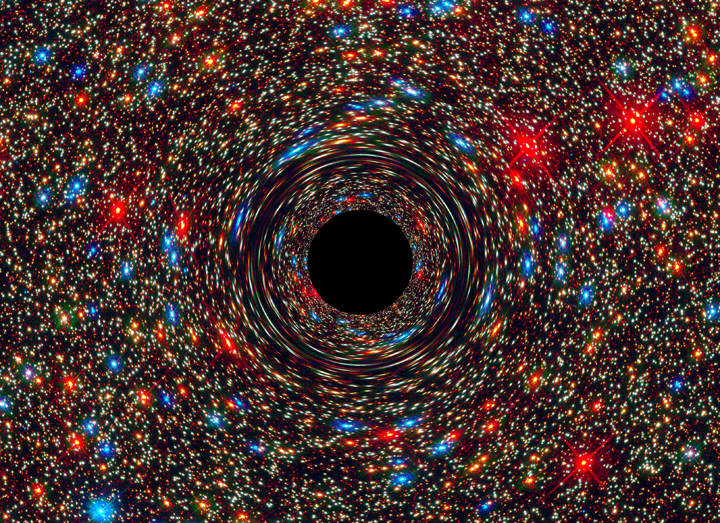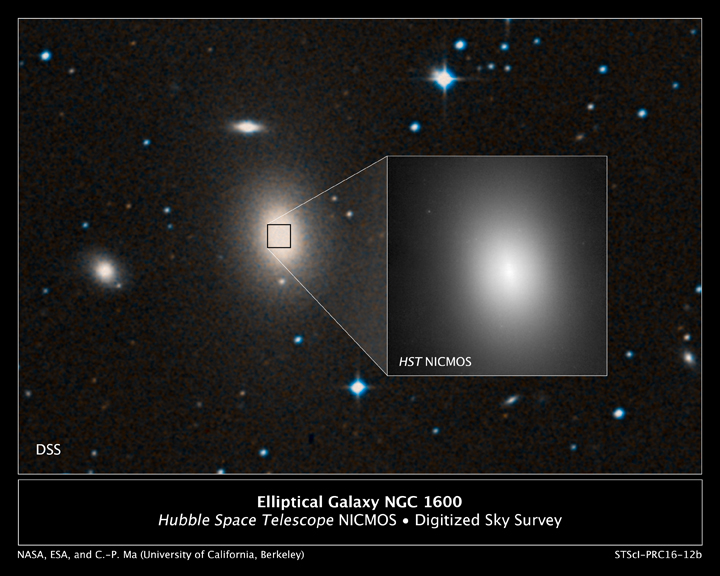The discovery was made using the Hubble Space Telescope‘s Near Infrared Camera and Multi-Object Spectrometer (NICMOS) as well as the giant Gemini telescope in Hawaii.

The black hole at the centre of NGC 1600 weighs about 17 billion times that of our own sun and lies within an elliptical galaxy (think: blob of stars) in a fairly empty area of our universe. It’s akin to driving through a small town and suddenly coming upon a towering skyscraper, said the Hubble release.
What makes this discovery so unusual isn’t that it’s just in an area with few galaxies: it also lies in the fact that the black hole is 10 times more massive than what they had predicted for a galaxy of that mass. Based on previous observations, astronomers had come to believe that the larger a galaxy’s bulge, the more massive the black hole. But this doesn’t seem to be the case when it comes to this galaxy.
It’s believed that supermassive black holes — those that are about 10 billion times the mass of our sun — occur when two large black holes merge. As time goes on, it is fed with more and more gas and therefore becomes more massive. When it comes to NGC 1600, it must have been well fed.

Get daily National news
“To become this massive, the black hole would have had a very voracious phase during which it devoured lots of gas,” said lead discoverer Chung-Pei Ma, a University of California-Berkeley astronomer.
However, most of NGC 1600’s gas was consumed a very long time ago.
“Now, the black hole is a sleeping giant,” Ma said.
To date, the largest supermassive black hole weighs 21 billion times that of our sun.
WATCH: Answers about major black hole mystery discovered by SMU researchers



Comments